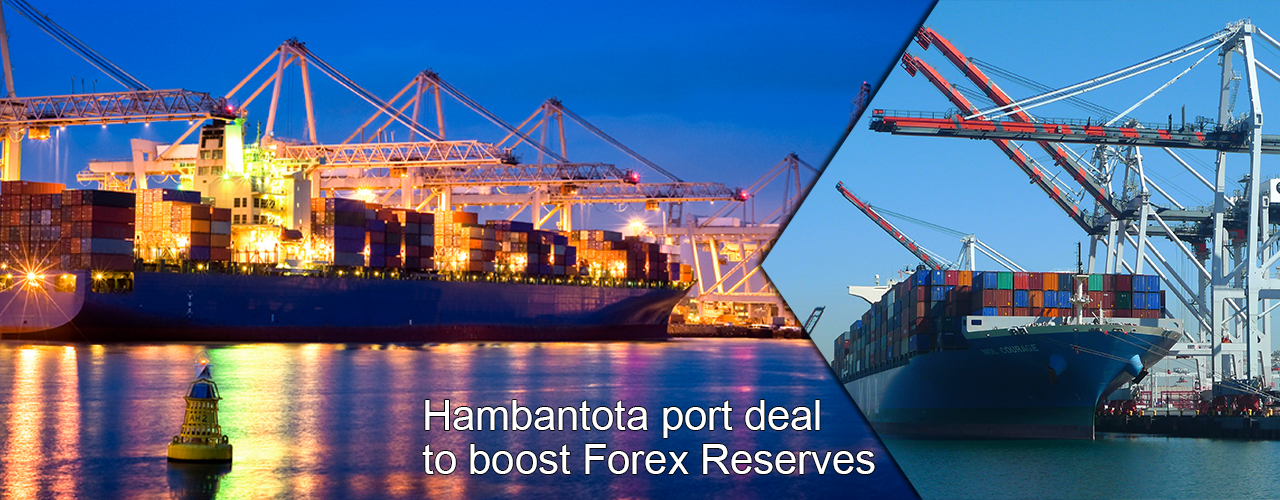Hambantota port deal to boost Forex Reserves
Moody’s in their latest report has commented that Hambantota port deal is credit positive and will boost the foreign exchange reserves of the country. It further added that this will improve Sri Lanka’s external liquidity position prior to large international bond payments that are due in 2019-2022.
The latest report from Moody’s came after the government announced its plans to sell a majority stake of Hambantota port to China Merchants Port Holdings Company Limited and the deal was concluded on 29th of July. The agreement value is set at USD 1.12 billion and has granted China Merchants Port Holdings Company Limited with a 99-year lease of the property.
Moody’s added that. “Importantly, the sale will allow the government to set aside earnings to repay its upcoming debt maturities and reduce its external debt, a key constraint on Sri Lanka’s credit quality. External debt maturities in 2019-22 total $13.8 billion.” This is an indication that the finances that were obtained through the agreement will be directed to foreign currency reserves which will serve to boost investor confidence and encourage future portfolio inflows.
However, Mood’s also noted that despite this Sri Lanka’s balance of payments positions remains vulnerable due to decline of foreign currency reserves in 2016 and early parts of 2017. As of June 2017, foreign exchange reserves (including gold and special drawing rights) stood at USD 6.9 billion. Foreign currency reserves portion of gross reserves stood slightly under USD 6 billion which covers about 3 months of foreign imports. This is slightly above the minimum threshold set by IMF for minimum reserves adequacy.

Sri Lankan central bank expects to raise the gross official reserves assets to USD 7.4 billion in line with achieving the goals set by Sri Lanka’s current three-year IMF Extended Fund Facility program. According to Moody’s Sri Lanka is marginally be able to reach these targets.
“We expect the central bank to come close to its target, which would help support the sovereign’s credit quality. Moving forward, greater exchange-rate flexibility and more limited foreign-exchange interventions by the central bank would help preserve reserves.”
Despite this Moody’s also added, “We expect Sri Lanka’s external vulnerability indicator, which measures the ratio of external debt payments that are due over the next year to foreign-exchange reserves, to rise to about 183% in 2017 from around 150% in 2016,”
According to the report the conclusion of the agreement will bring in additional foreign investments to the country for projects around the Hambantota port and allows the government to focus on many of its other key projects. Also, it was noted that construction of required infrastructure around the Hambantota area will also attract more private sector investments.
OSL TAKE
Conclusion of the Hambantota port agreement has enabled the government to boost foreign exchange reserves which will stand in good stead ahead of bond payment commitments that lay ahead. Also, the government has the power to buy back 20% of the shares back after 10 years which will place both stakeholders at parity.
Trickle on effect from the Hambantota port agreement is likely to come in the form of additional investments in to infrastructure surrounding the port area and into the operation of the port itself. These investments will have a positive effect on the economy as a whole without burdening the government with massive expenditure. With the improved Forex outlook investors should find Sri Lanka has grown in appeal as an investment worthy country with development projects of diverse natures.
| Article Code : | VBS/AT/08082017/Z_1 |

